Yoga is one of the best ways to get back into shape after having a baby. Postpartum Yoga allows you to focus on your breathing while stretching out the muscles. Those are tightening up from changing hormones. Yoga postures help new moms heal quickly and return to their normal activities. Yoga also has the benefit of offering relaxation for both body and mind, which can help with postpartum depression.
The postpartum period is an emotional rollercoaster, and it can be hard to find time for yourself. But there’s nothing more important than taking care of your body during this vulnerable time. So for you, Here are 11 best practices that will help spice up your at-home postpartum yoga routine.
In This Article
- What is Postpartum Yoga?
- 11 best Postpartum Yoga
- 1. Child’s Pose:
- 2. Five-pointed star pose:
- 3. Cat-Cow pose:
- 4. Savasana pose:
- 5. Mountain Pose:
- 6. Knees to heart pose:
- 7. Goddess pose:
- 8. Bridge Pose:
- 9. Chair Pose:
- 10. Boat Pose:
- 11. Legs up the wall pose:
- What are the benefits of Postpartum Yoga?
- How do you do postpartum yoga?
- How soon after giving birth can you do yoga?
What is Postpartum Yoga?
Postpartum Yoga is the practice of performing gentle, restorative yoga in a supportive and comfortable environment. The main purpose of postpartum yoga is to regain and maintain your pre-pregnancy strength. And also fluidity through gentle stretching and therapeutic movement. Postpartum Yoga can help women recover from pregnancy, childbirth, and all that comes with motherhood. It is a great way to get back into shape and learn tools for coping with the challenges of new motherhood.
Postpartum Yoga provides a supportive environment for you to do gentle, restorative yoga to regain and maintain your pre-pregnancy strength. Gentle Postpartum Yoga will help you stretch out your stiff joints, especially the hip flexors. It is important to restore mobility to your pelvic floor muscles. Because it has been through a lot carrying around that belly for nine months. Postpartum Yoga is also beneficial for your mental health.
11 best Postpartum Yoga
Postpartum Yoga practice is important because it provides you with an effective tool to cope with challenges presented by postpartum life. Below we will introduce you best practices of postpartum Yoga:
1. Child’s Pose:
This is a great pose for opening the hips and lower back. This pose is beneficial for any back problems including sacrum problems. For the Child’s Pose, kneel with your big toes touching and knees spread apart. Sit on your heels, lean forward, extend your arms in front of you, onto the floor or yoga mat so they are extended out in front of you. You can extend them straight in front of you, in a T-position with your arms and thighs, or even touch your forehead to the Yoga mat. Also place your hands on either side of the head (fingers pointing toward the shoulders), elbows by the hips.
Benefits of Child’s pose:
- Help in your blood circulation
- Help in stretching your abdominal muscles.
- Helpful in your digestion.
- Provide deep relaxation.

2. Five-pointed star pose:
This is a great pose to create space in your lower back and hips. It also gives your pelvic floor muscles a nice stretch. Lie down on the folded blanket with your arms and legs stretched out in front of you, making a star-like shape with your body. Now inhale and lift both arms and legs in the air. Lift them as much as you can, while feeling a stretch in your lower back and pelvis area. When you exhale, move your arms and legs close to each other, over your chest. Inhale again and open up your arms and legs to their starting position.
Benefits five-pointed star pose:
- Strengthens the heels and balls of feet
- Helps in improving the balance of the body
- Improves alignment of the postpartum body
- Provide flexibility to the joints.

3. Cat-Cow pose:
The cat-cow pose is a gentle backbend and forward flexion of the spine. It helps to strengthen the abdominals while helping to stretch out the lower back muscles. This pose is good for opening up your chest and shoulders. Cat-Cow is very similar to the cat pose, but with a gentle backbend which is good for loosening up your spine. Cat-Cow yoga poses will also help your pelvic floor muscles to relax.
Benefits of Cat-Cow pose:
- Helpful in relieving tension
- Helpful for your core muscles
- Improves blood flow circulation
- This yoga poses is helpful for your nervous system

4. Savasana pose:
The Savasana pose is also known as “Corpse Pose.” If you practice Yoga, then you probably already know the importance of this pose. It has many benefits to your body and mind. You can easily get into this pose by lying down on your back with arms at sides, palms facing up. Let each leg fall out to either side of you, about 30 degrees from your body.
Benefits of Savasana Pose:
- It helps strengthen your back and stretch out your shoulders
- It helps in deep relaxation to your whole body.
- Reduces headache and migraine pain.
- Helps to relieve stress, anxiety, and depression.

5. Mountain Pose:
The Mountain Pose is a standing yoga posture. This pose stretches the muscles of the hips, thighs, and ankles. It also activates your abdominal organs. While standing with feet together, take a deep breath in, and on the exhale raise your arms out at shoulder height with palms facing forward. On an inhale stretch your arms up overhead and then exhale your hands back down to the starting position.
Benefits of Mountain pose:
- Strengthens your spine.
- Activate the core muscles of the abdomen, thighs, and buttocks.
- Increase flexibility
- Helpful to the breathing process.

6. Knees to heart pose:
Knees to heart pose is another great pose for all postpartum women. The Knees to Heart Pose will be beneficial for you by opening your hip area. For this pose, set your hips on the floor so you are sitting on your heels. Then tuck your hips underneath you as if trying to sit on a mat. Then reach forward and hold onto either your ankles or feet.
Benefits of knees to heart pose:
- Helps to open the hip flexors and your lower back.
- Helps to stretch and strengthen the psoas muscle.
- Aids in relieving sciatic discomfort.
- Stimulates your abdomen and pelvic organs

7. Goddess pose:
The goddess pose is a very gentle forward fold. In this pose, women can let go of tension and stress from their bodies while stretching out the backs of their legs. The pose is also helpful for counteracting the effects of gravity on your pelvic organs. It strengthens the lower back while lengthening the spine and gently stretches the inner thighs and groin.
Benefits of Goddess pose:
- 1 . The goddess pose strengthens the lower back.
- 2. It lengthens the spine.
- 3. It stretches out your inner thighs, hips, and groin.
- 4. Goddess pose eases symptoms of mild depression, anxiety, headaches & fatigue

8. Bridge Pose:
This pose is one of the most advantageous poses for Postpartum Yoga. Because it boosts your energy and also helps in keeping a healthy blood circulation. Bridge Pose also helps in relieving mild depression and fatigue. During this pose, blood is drawn away from the feet and to the torso. So it will be easy for you to prevent your low blood sugar levels which are very common in early postpartum days.
Benefits of Bridge pose:
- It helps in relieving mild depression and fatigue.
- It boosts your energy levels.
- Helps in blood circulation.
- It helps in regulating the thyroid gland

9. Chair Pose:
Chair yoga poses are great for women who are just starting their postpartum journey. They provide the support you need when learning to use your core muscles again. These poses, when done regularly, can help you stay strong for when your baby is ready to go on walks with you around the neighborhood. This pose is great for helping you get your upper body back in shape.
Benefits of chair pose:
- It helps to strengthen your legs and arms.
- Increases the flexibility of hip joints and shoulders
- Ideal for regaining control of your bladder
- Beneficial in healing postpartum hemorrhoids

10. Boat Pose:
Boat Pose is designed to strengthen your core important for pelvic floor health. Boat gentle yoga pose can help you get your pre-pregnancy body back, make the muscles of the front belly stronger and help improve digestion. This pose stretches your back hips, thighs, and side body. It also relieves tension from the uterus, ovaries, and intestinal organs. This pose can help you learn how to relax.
Benefits of Boat Pose:
- It makes the muscles of the front belly stronger and improves digestion.
- Helps tone the abdominal muscles.
- Helps to regain upper body strength.
- Prevents bloating, indigestion and constipation

11. Legs up the wall pose:
This is a great postpartum pose for nurturing your back. It provides the important stretch that you need through your lower back. And helping to alleviate aches and pains that can come with c-section recovery. Legs up the wall pose helps to regulate blood flow and bring a welcome sense of peace. This yoga poses for postpartum are also responsible for normal delivery and helpful in releasing tension.
Benefits of Legs up the wall pose:
- Aids in regulating the flow of blood to the pelvic area
- Provides a wonderful stretch through the lower back.
- Helps with cesarean recovery and uterine prolapse.
- Helps in relieve tension of having diastasis recti

What are the benefits of Postpartum Yoga?
Although it’s hard to pin down the benefits of postpartum yoga. Because there are so many benefits across a wide spectrum of physiological and emotional experiences for women. But below we have mentioned the important benefits of postpartum Yoga poses.
1. Help in decreased postnatal Depression and anxiety:
As well basis on informational and educational purposes women who take yoga classes in the last six weeks of pregnancy. And the first six months after giving birth may experience less depression than women who don’t exercise. The researchers found that women who took yoga classes experienced just half of the symptoms of postpartum depression. Postpartum yoga postures help women in getting rid of that anxiety also.
2. Help in Increased calmness:
As the days pass after giving birth to a child, women are usually exhausted. They face emotional turmoil and are vulnerable to stress. Postpartum yoga will help them deal with these emotions, provide relaxation and increase their energy levels. This is the time when you need to relax most as your body is recovering from major surgery and demands complete rest. Post yoga you will feel more relaxed, refreshed, and rejuvenated.
3. Reduced muscle tension:
The physical benefits of yoga include increased muscle strength and emotional well-being. Daily physical activity during the postpartum period helps to restore strength, endurance, and good posture after pregnancy. As well as engaging your core muscles to maintain good posture, regular practice lowers blood pressure, helps to reduce fatigue, and invigorates you.
4. Help to keep blood pressure low:
During pregnancy, a woman’s heart rate and blood pressure increase to provide enough blood flow to the placenta. After birth, most women have a dramatic decrease in their blood pressure. Blood pressure is an important measure of recovery from childbirth. By performing daily yoga exercises, your circulation will be improved bringing more oxygen-rich blood to the muscles and organs of your body.
5. Improve Bladder Control:
As well as birthing a baby creates changes in the pelvic muscles, which can contribute to stress incontinence. Although this usually resolves on its own, practicing yoga during the postpartum period speeds up the recovery of bladder control. And reduces loss of urine with coughing, sneezing, or even laughing. It also helps you regain your pre-pregnancy tone in the pelvic muscles.
How do you do postpartum yoga?
Postpartum yoga is a great way to stay active, deep breathing, and move your muscles after childbirth. It’s really important to keep moving after delivering your baby so you can get back into shape and feel better about the way you look.
For doing postpartum Yoga, you need the right postpartum yoga clothes, the best yoga mats, and proper guidance. And you also need to maintain your workout routine to get a pre-pregnancy body shape. And make sure about the clothes that you wear to your postnatal yoga are very important. Because if they are not comfortable then it can lead to backache and pain in other parts of the body.
Therefore, there are so many yoga poses to do to get actual body size after childbirth. Postpartum yoga also helps reduce stress and anxiety, builds strength in your stomach muscles, hips, back, thighs & perineum (the area between your vagina). It also improves flexibility, promotes blood flow, and helps with lactation. Many communities offer free postpartum yoga classes for new moms. It’s perfect for the beginner or experienced practitioners who want to enjoy some of the benefits of postpartum yoga.
How soon after giving birth can you do yoga?
Though a healthcare professional said that the better time to do yoga is two weeks after vaginal birth and six weeks after a C-section. The type of yoga postpartum will depend on the amount that your muscles are used to during pregnancy. Some people may feel ready for postpartum yoga after six weeks. But other people might not feel ready until months later. Yoga is done at your own pace, so don’t worry if it takes time to get back into things.
It’s best to wait before trying any strenuous movement too soon following childbirth. Because this could result in potential pain in the abdominal area and cause harm to the baby. Instead, focus on day-to-day tasks or try out gentler exercises like light walking. It’s best to give the body time to heal from childbirth before trying anything too rigorous.
If you’ve had a vaginal birth, it’s best to wait until your six-week check-up before resuming yoga. This is particularly true if you tore during the process or had an episiotomy. However, that doesn’t mean that you should completely stop exercising in general – try walking around the block or doing some light stretches instead of hard postures of yoga.
Is Yoga Good For Postpartum?
Yoga is always good for postpartum, but it contains benefits that are specifically helpful during this time in pregnancy. A few of these benefits include hormone balancing, stress relief, and overall strength to feel empowered. In addition, the breathing techniques of certain styles of yoga have been found to help reduce feelings of anxiety. That women experience while going through pregnancy or early motherhood. Yoga can be a tool in reducing the stresses felt by a woman while she adjusts to her new life as a parent.
Therefore, many studies found that women who take yoga classes tend to feel less stressed during the early stages of motherhood. While other studies have shown that participating in prenatal exercise programs may reduce the risk of preterm birth. In addition, these studies have shown that women who take yoga classes during pregnancy experience lower rates of nausea and vomiting. This means that pregnant women who practice professionals can reduce their chances of developing gestational diabetes which is a complication for both mother and baby
The Conclusion!!
However, yoga is one of the best ways to get back into shape after having a baby. Postpartum yoga can help you focus on your breathing while stretching out the muscles that are tightening up from changing hormones. If you’re looking for a way to heal quickly and return to your normal activities, yoga is an excellent choice. It can also help with postpartum depression symptoms by offering relaxation for both body and mind. So take the time out of your day-to-day life today to make yourself feel better. If you have any queries regarding the postpartum poses of yoga just feel free to contact us below the comment section.
FAQ’S:
What is postnatal yoga or exercises?
Postnatal yoga or exercises are a great way to help your body recover from childbirth. Women not only have the trauma of labor and birth but there are also hormonal changes. That can have an effect on general well-being as well as other changes in metabolism and lifestyle.
Yoga poses and exercises focus on important areas post-childbirth. Such as hormonal balance, uterine recovery, pelvic floor health, bladder control, etc. Postnatal yoga is beneficial for both mother and baby by helping to support bonding through breath work and appreciation for this beautiful time after having a new life.
What is a sequence of doing Yoga postures?
It depends on what you want to do. Typically, there are periods of holding each posture, then repeating it three times for a breath cycle. These specific postures are selected based on the need for back support. If you’re new to postnatal Yoga, it may be best to start with child’s pose, bridge and knees to heart. Hold each for 30 seconds. Eventually, bridge for 5 minutes; seated forward bends for 1 minute.
However, before you can do a yoga pose, you need to activate and engage the appropriate muscle group. As well stabilizing muscles before attempting to stretch and lengthen them. These poses are designed with that in mind, so beginners should start from this sequence of activation exercises, with no joint-bending stretches at first.
Is yoga good for postpartum weight loss?
Though yoga is usually great for finding inner balance and reducing stress, postpartum weight loss is often different. Yoga may interfere with the hormonal changes that happen during pregnancy and breast feeding. Which can be warm to get back into shape after giving birth.
The extra pressure on your stomach could cause discomfort while exercising. It might be best to ease back in slowly to prepare your body. If you don’t enjoy yoga before pregnancy, there’s a good chance you won’t like it afterward either. While some women find relief from emotional stress through emotional release that can come from yoga. This might not happen post-baby because of the difficult emotions post-pregnancy tend to bring on.
Do Kegel exercises are the best for a postpartum Yoga routine?
Kegels are not typically used in Yoga routines. Kegel exercises are usually just meant to strengthen the pelvic floor muscles that help with urinary continence, bowel control, and sexual function. These are not typically thought of as important aspects in a Yoga routine. Doing these exercises will not make you any more likely to lose weight or become more flexible. And nor does it have much to do with maintaining mental health or emotional stability. And all of which are viewed as integral components in any mindful fitness regimen.

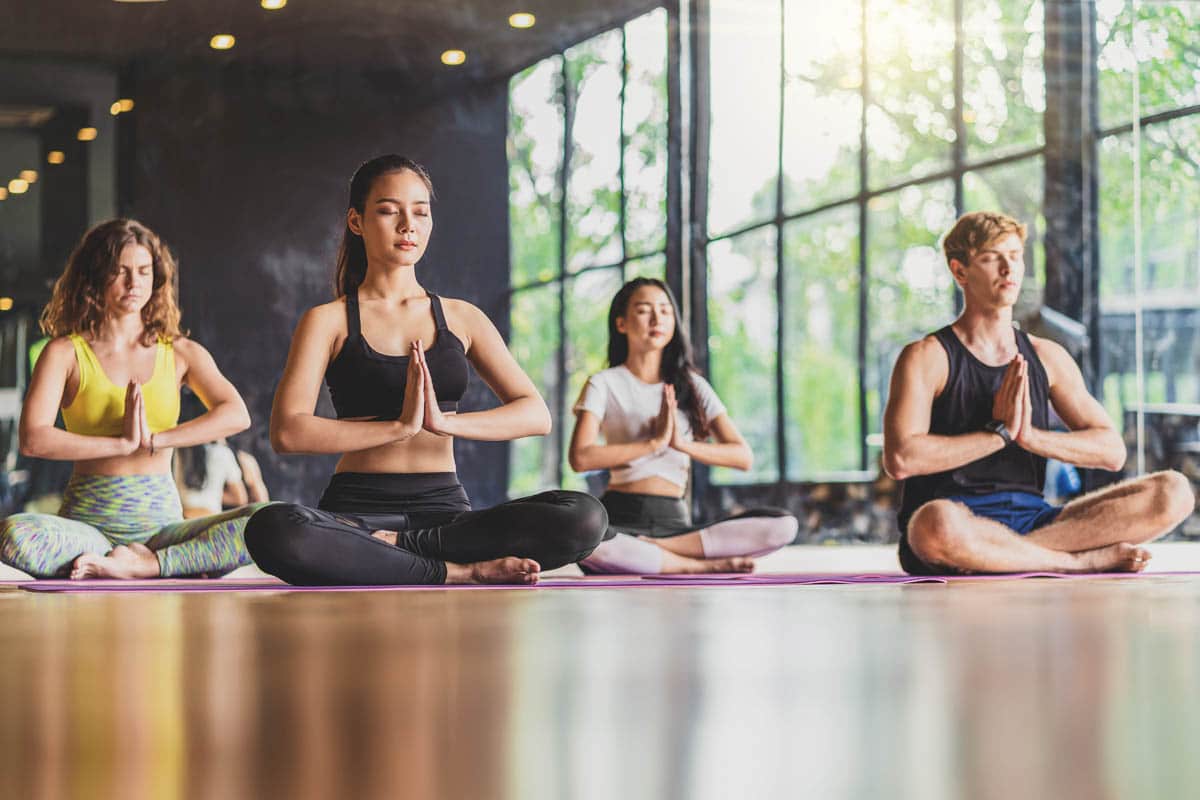
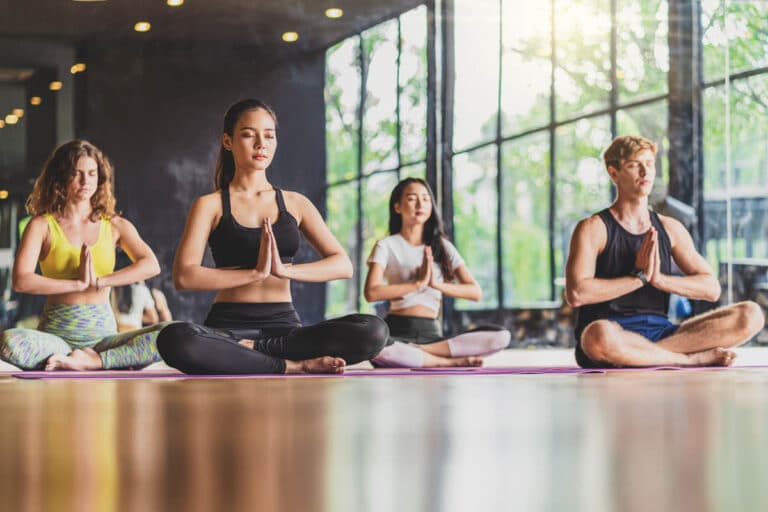
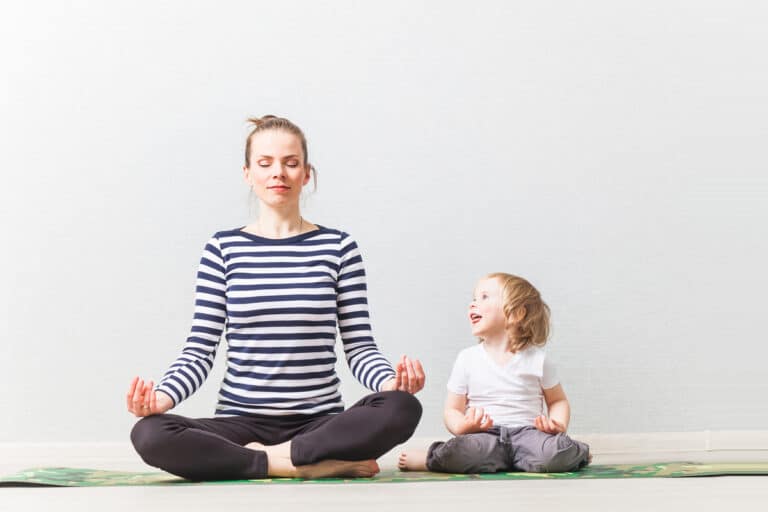
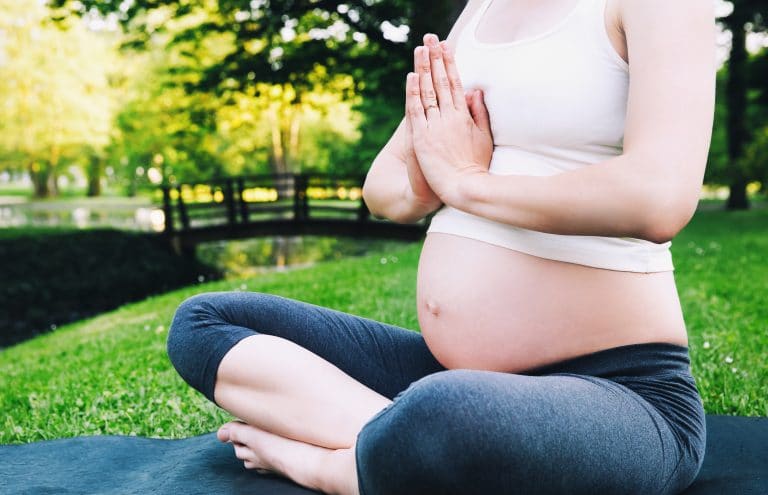
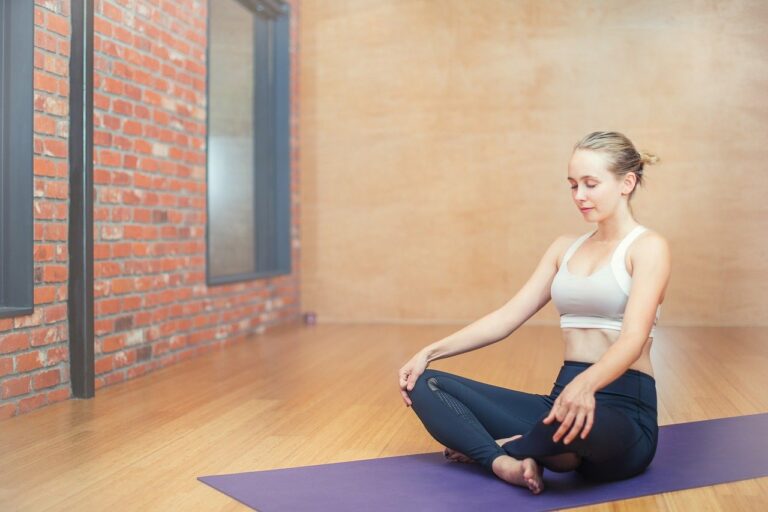




![Home Renovation Guide [2025]](/app/uploads/2021/04/design-hacks-1-378x300.jpg)
